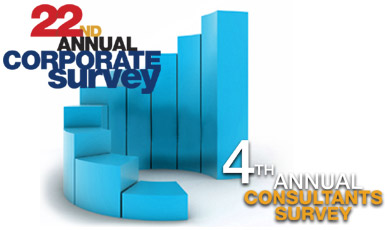What's All the Noise?
Dec/Jan 08

On one side we have the CEOs surveyed by The Business Roundtable who expect their sales, capital spending, and employment levels to remain steady in the first half of 2008. On the other side we have the economists who see shrinking corporate profits and limited financing options for business. These are not good signs for capital spending and hiring.
These economists' worries are quelled by the CEOs polled by Chief Executive magazine (albeit back in October); 75 percent of them said the likelihood of recession in the next 18 months is less than 50 percent. Then, on December 12 - one day after the Federal Reserve cut the interest rate a quarter of a point to 4.25 percent- Morgan Stanley's chief economist Richard Berner sent a note to his clients saying, "A mild U.S. recession is now likely, with no growth for the year ahead." Moody's Economy.com chief economist Mark Zandi agreed and said the odds of a U.S. recession (defined as two consecutive quarters of negative economic growth) are now above 50 percent.
The economists at the nation's universities are weighing in on this issue too. Forecasters at UCLA and the University of Michigan say a recession will be averted. Edward Leamer, director of the UCLA Anderson Forecast notes that a look at the job market shows why a recession isn't a certainty. In the past, economic downturns were preceded by large increases in employment followed by work force reductions. Now, job growth is slow and there is little excess employment to be cut. Consequently, Leamer says it is unlikely companies will cut the number of jobs needed - which has been estimated at two million - to put the economy into recession. "How can we lose jobs that we never had?" asks the UCLA report.
So who should we believe? Let's look to the results of our 22nd Annual Corporate Survey, included in this issue. Survey results indicate that fewer of this year's respondents reported plans to open new facilities or expand existing facilities than reported by last year's respondents. Importantly, a smaller percentage of the 2007 respondents as compared with last year's survey respondents also said they would be creating more than 100 jobs at these new or expanded facilities. These results reflect the general economic downturn.
Thus, taken as a whole, these projections of slow growth - or negative growth (depending on whom you choose to believe) - are pretty unsettling. But as Leamer wrote in the latest Anderson Forecast report, "Be calm, my friends. Be calm." Let's stop the clattering and let clearer heads prevail.
Project Announcements
Coastal Ready Mix Plans Conway, South Carolina, Production Operations
12/20/2025
PRET Advanced Materials Expands Johnsonville, South Carolina, Manufacturing Operations
12/19/2025
Grupo Vialume Plans Colquitt, Georgia, Production Operations
12/19/2025
RelaDyne Expands Hebron, Kentucky, Operations
12/19/2025
Kroger Plans Simpson County, Kentucky, Distribution Operations
12/19/2025
Hines Furlong Line Expands Paducah, Kentucky, Operations
12/19/2025
Most Read
-
The Workforce Bottleneck in America’s Manufacturing Revival
Q4 2025
-
Rethinking Local Governments Through Consolidation and Choice
Q3 2025
-
Lead with Facts, Land the Deal
Q3 2025
-
Investors Seek Shelter in Food-Focused Real Estate
Q3 2025
-
America’s Aerospace Reboot
Q3 2025
-
Tariff Shockwaves Hit the Industrial Sector
Q4 2025
-
The Permit Puzzle and the Path to Groundbreaking
Q3 2025